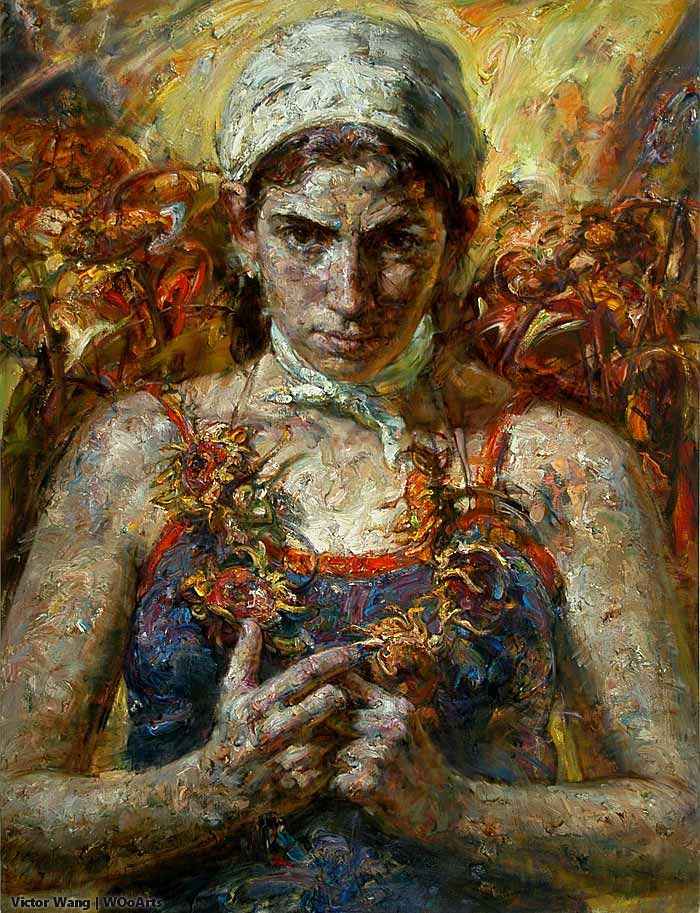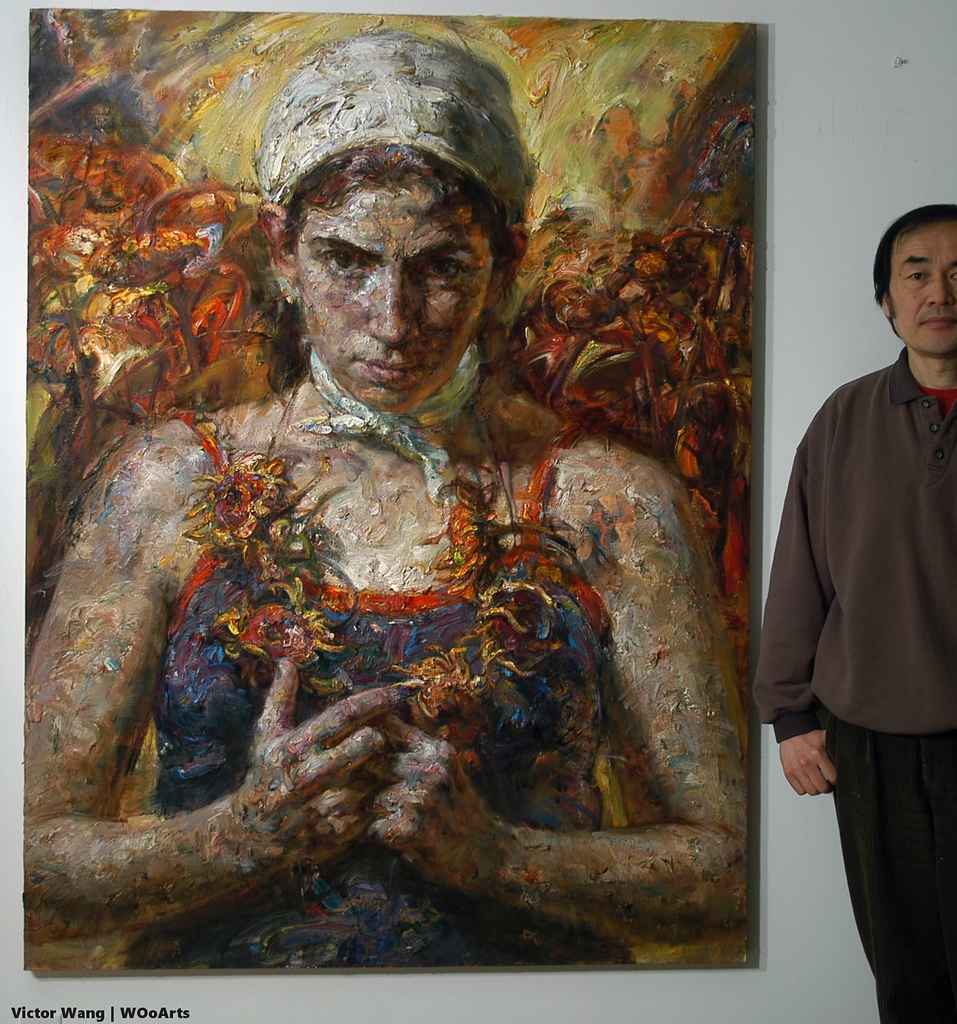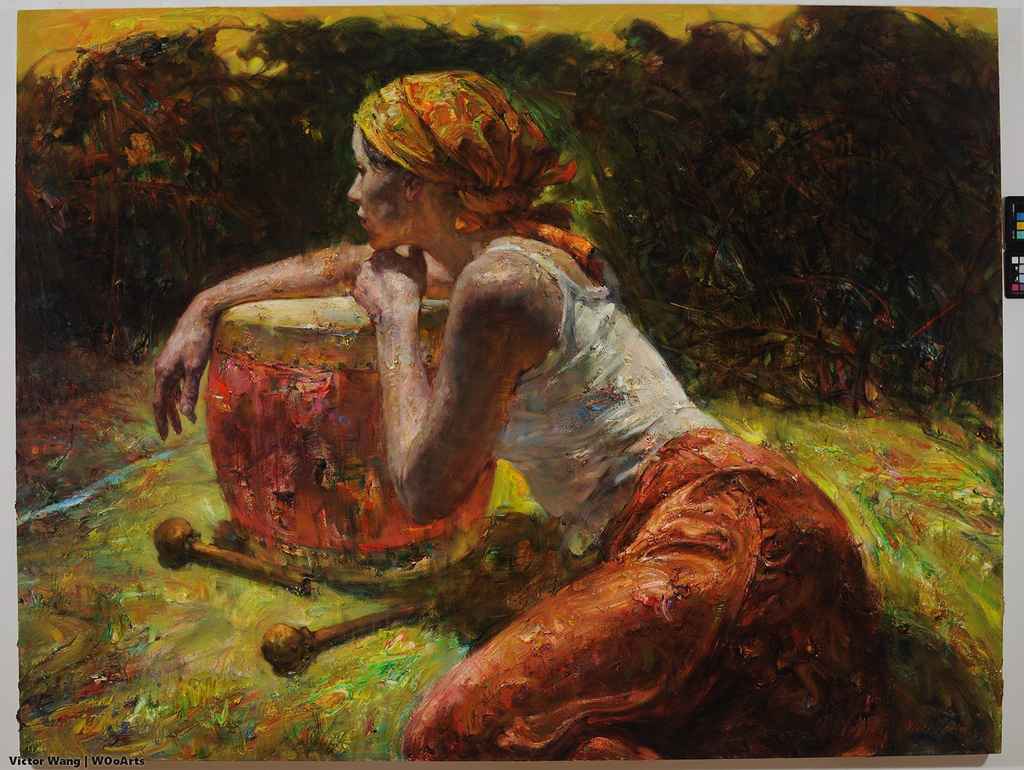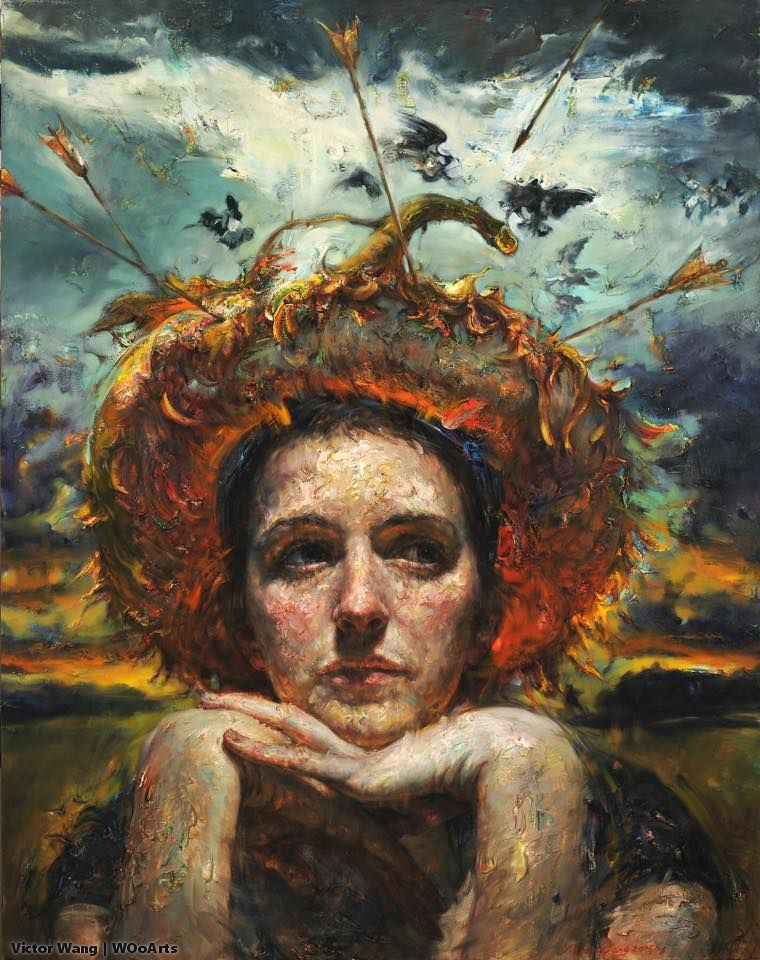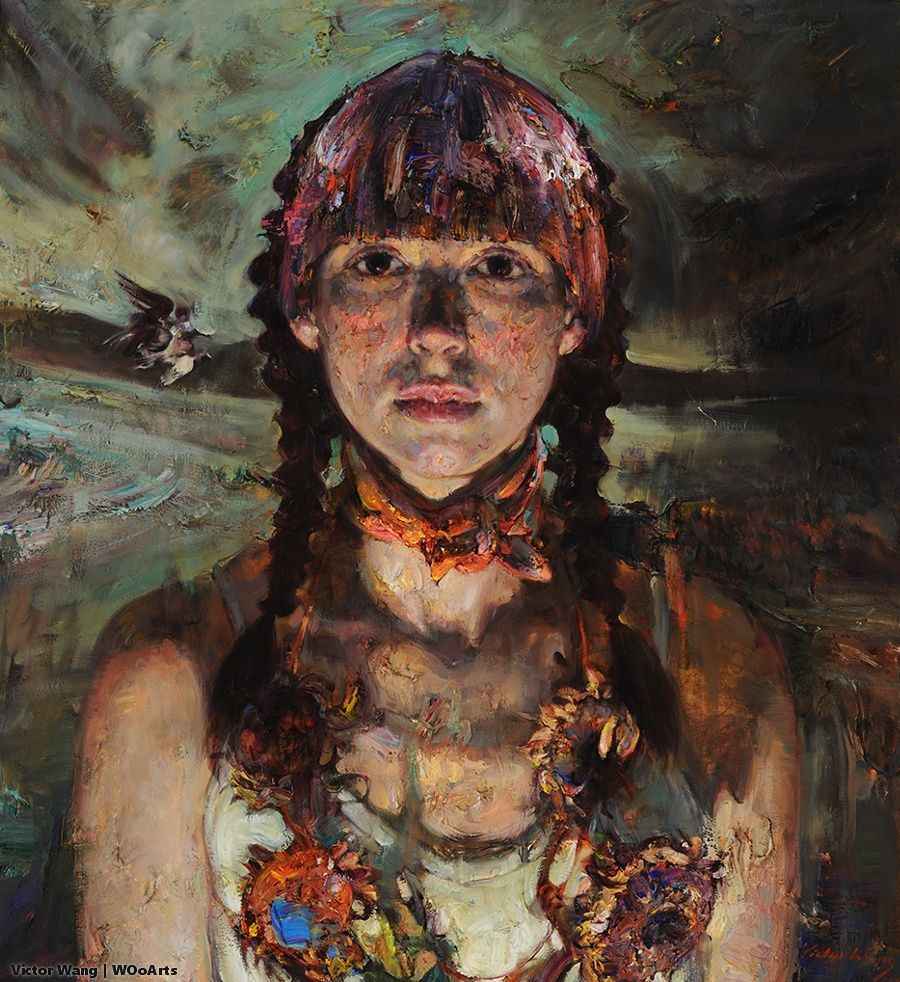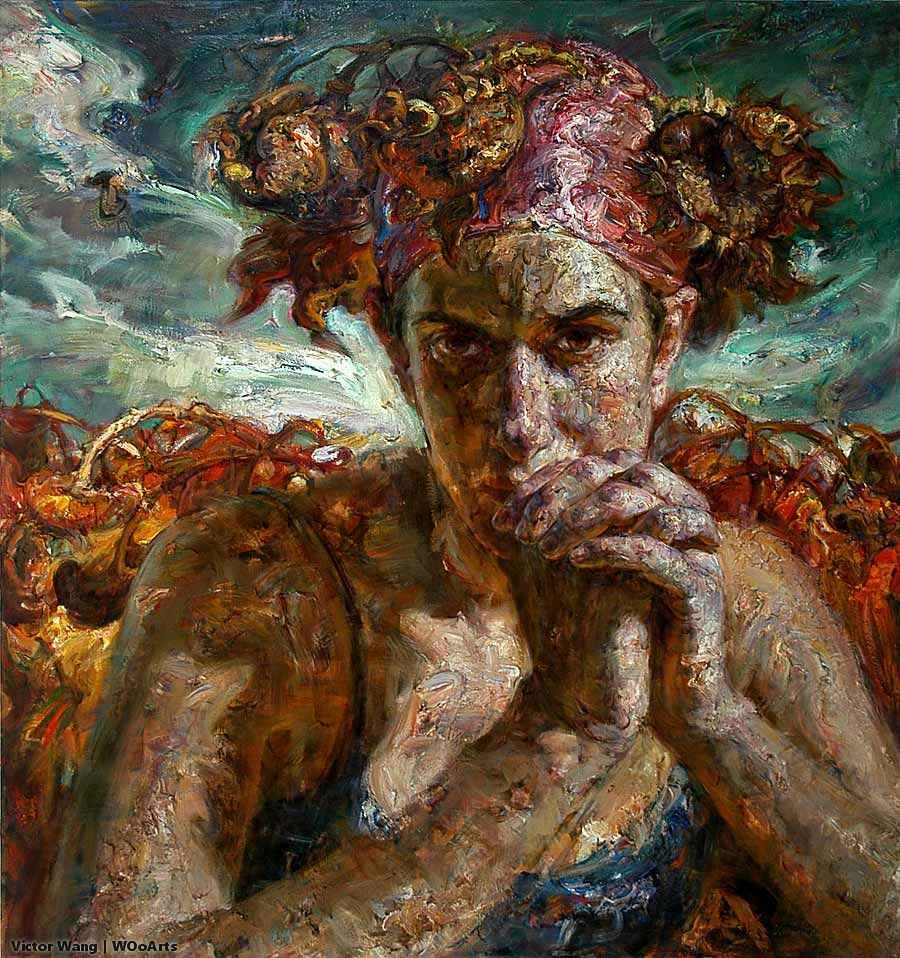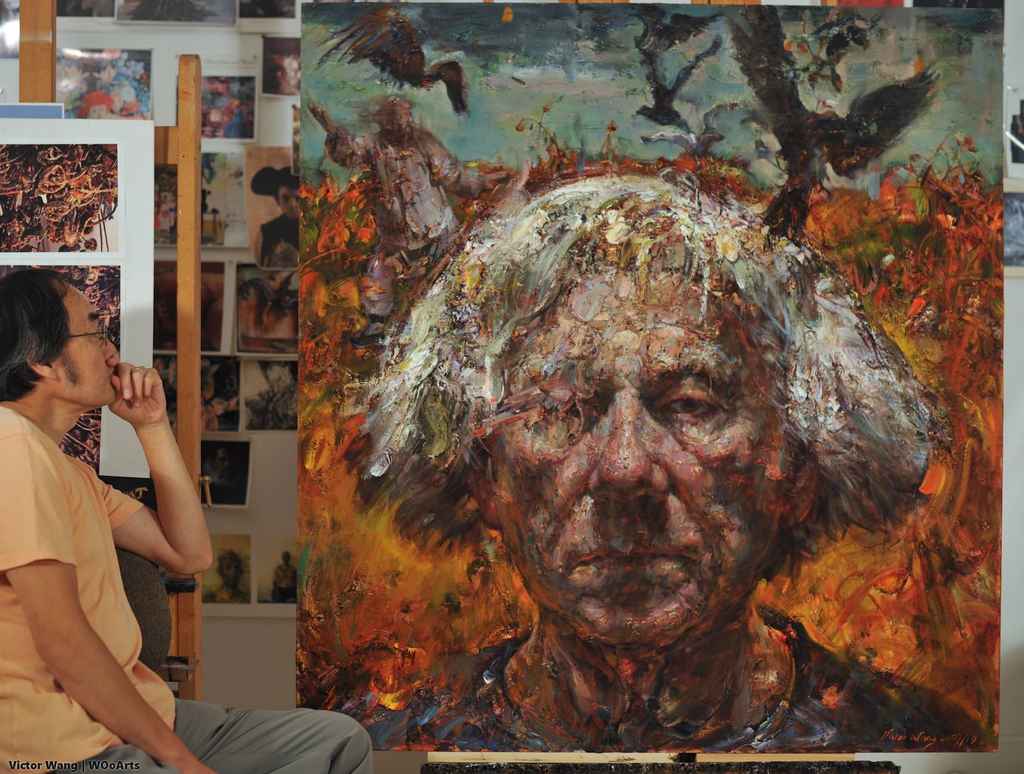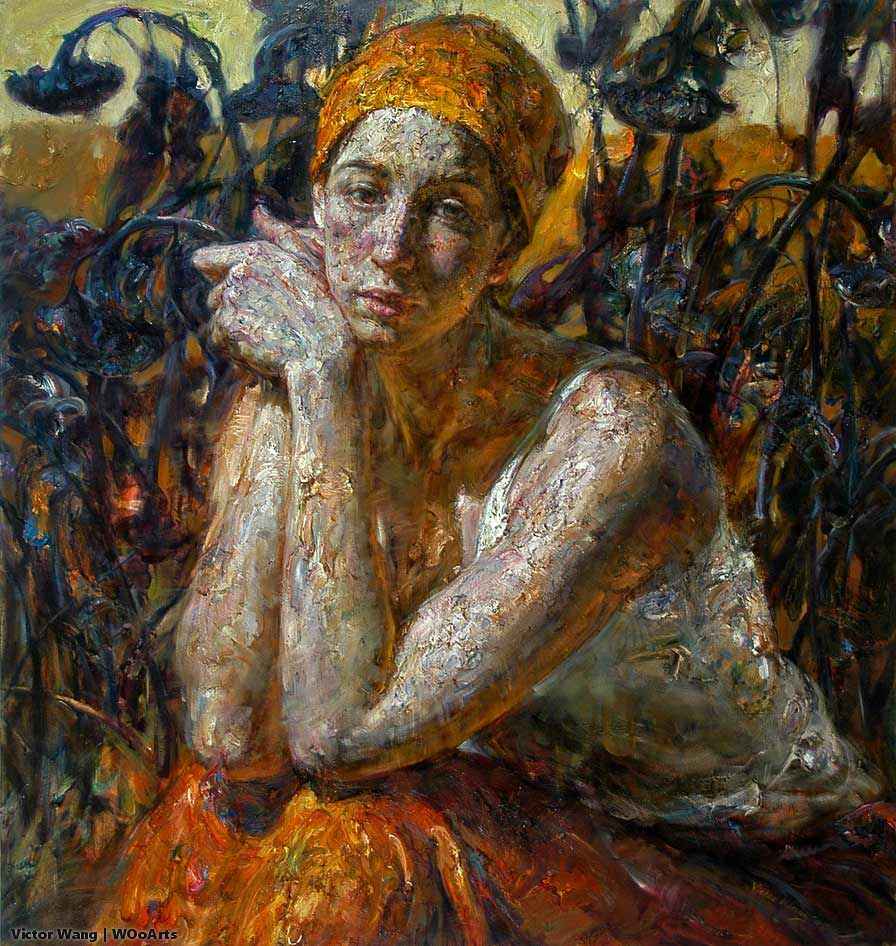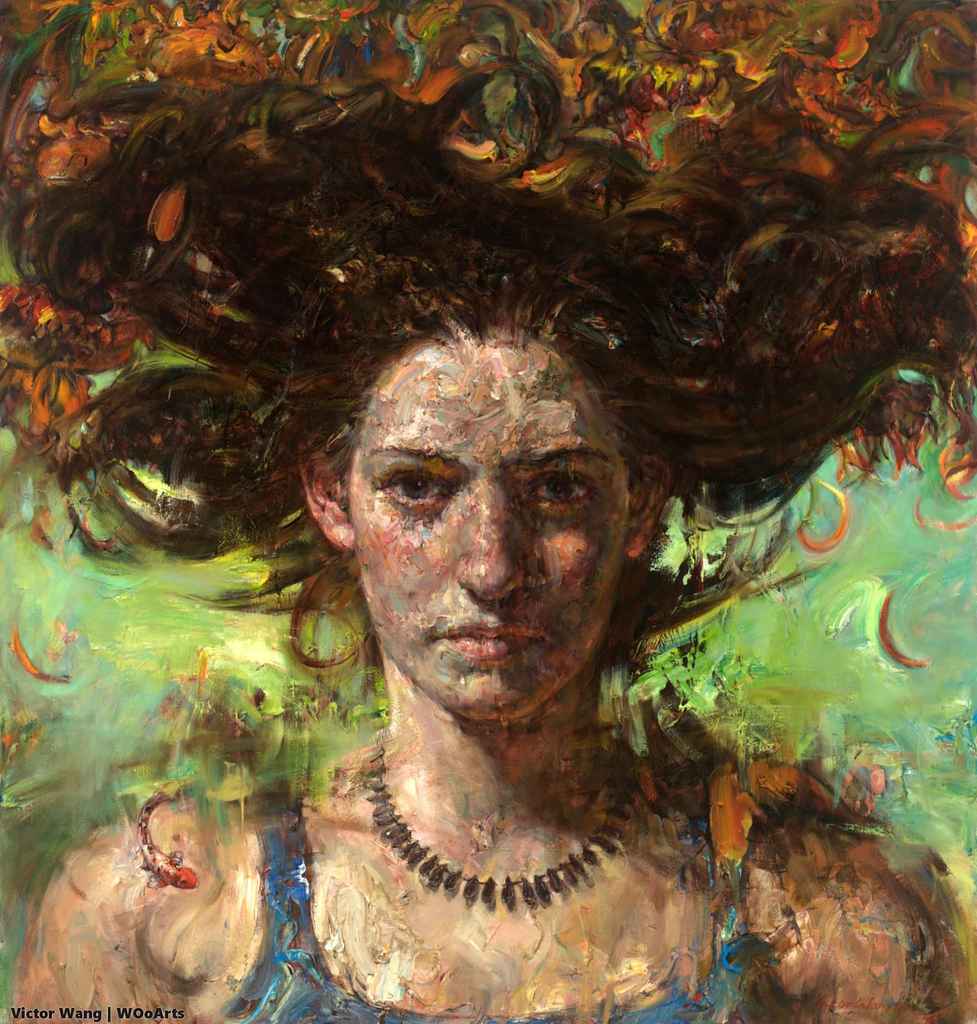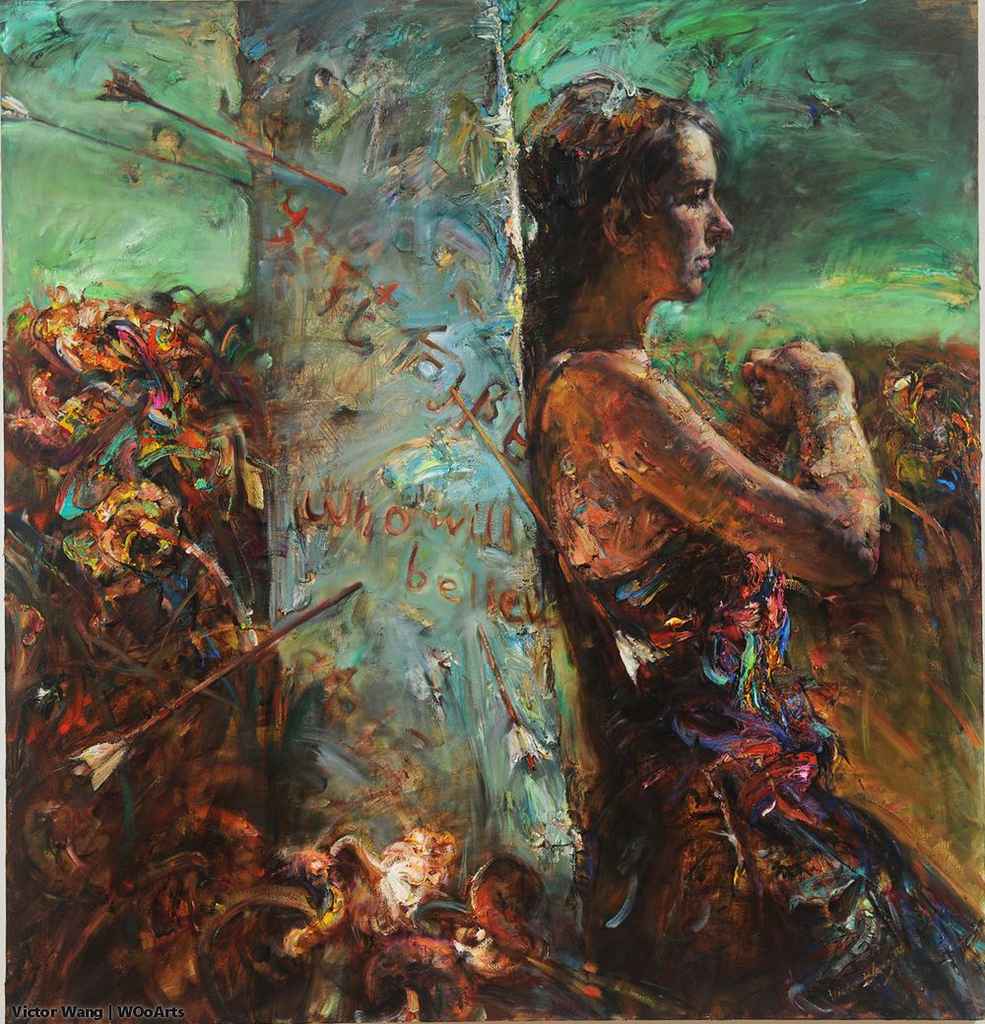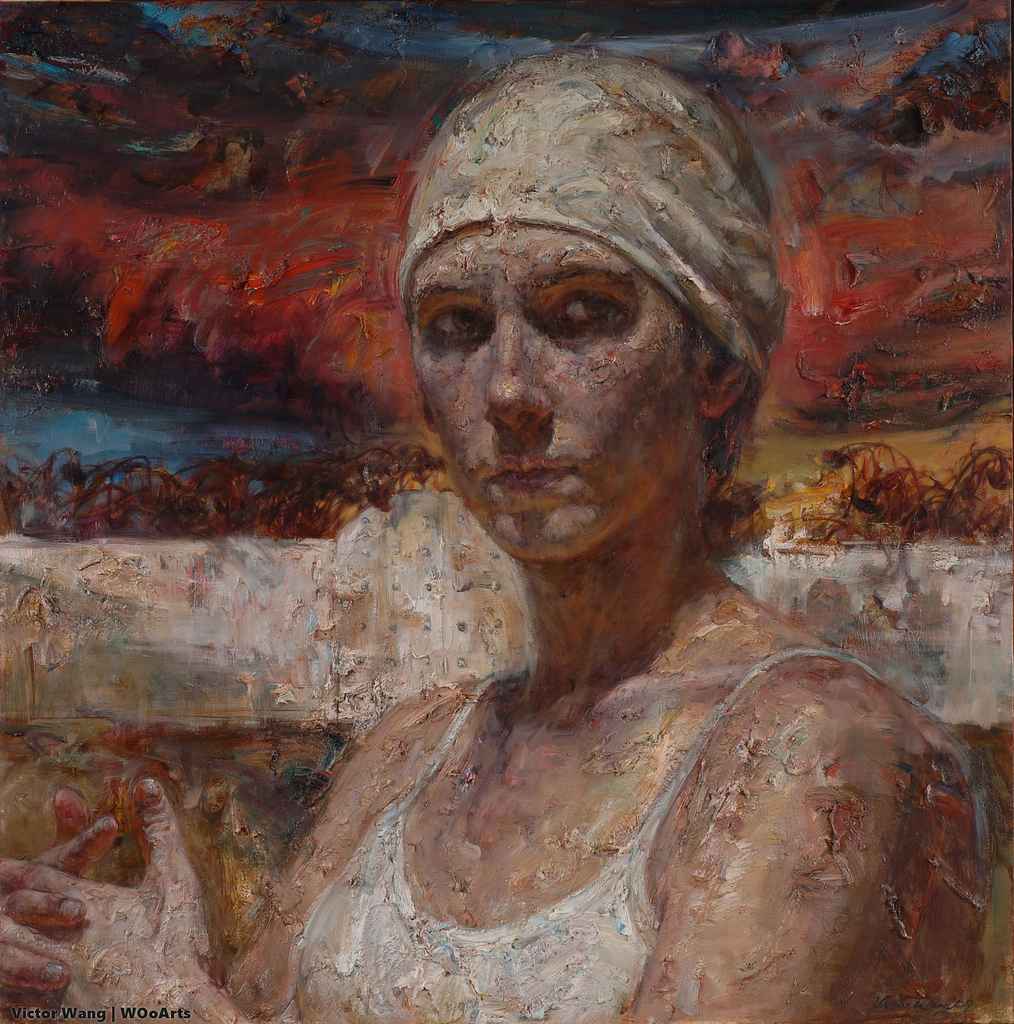I grew up among the sunflower fields in northern China. In my childhood years, I played under the bright, yellow sunflowers with my brothers everyday. China’s Cultural Revolution played an important part in my life.
During that time, sunflowers were used as political allegories to depict how citizens of China should follow Mao who represented the sun, since sunflowers follow the sun’s movements. People eventually inferred the deception that this symbol masked.
After graduating from high school, I was sent to a labor camp in the country for ‘reeducation’ during China’s Cultural Revolution. There, I was subject to grueling farm work. Often, I worked in corn and sunflower fields from sunrise to sunset. Thus, for me, sunflowers evoke both personal joy and sadness.
Therefore, to deliver my complex feelings, I use sunflowers as a metaphor to connote my background and emotional stage.
My incorporation of collages of figures from China’s Tang Dynasty represents my Chinese heritage and is a constant reminder of where I came from. The texture and earthiness on the canvas’s surface are inspired by the texture of the soil on the farm where I worked in China.
Although I often gain great pleasure from the process of painting, it is most important to unfold expressively those feelings within myself.
Three Major Traditional Techniques of Oil Painting (in Chinese)
Written by Victor Wang
Published by National Museum of History (Taiwan)
After years of working with the oil medium, I realize the best way to teach students the technique of oil painting is to start from the traditional approach. By doing this, it provides a student with a complete picture of the origin, development, and evolution of the technique of oil painting, but also makes them appreciate the special care and deliberate attentiveness taken by the old masters toward their work to achieve that mysterious beauty in their masterpieces.
The deep appreciation and the thorough knowledge of the classical tradition will allow students to handle any of his or her creative ideas with a unique sense of freedom.
I have carried this concept in my teaching at Fontbonne University in St. Louis since 1993, and have observed evident growth of my students, either in their understandings of oil painting as an artistic medium, or in the application of their own paintings. These experiences reinforce my confidence in the approach.
The major sources of the teaching materials come from many books I have on these topics, and my experiences. My students have frequently suggested that I compile the class notes into a book so the information would be available to more people. These suggestions motivated me to start organizing the materials and recording my teaching experiences.
Most books I have read about the traditional techniques are either too theoretically oriented or too personalized to offer any objective and useful analysis. Therefore, my goal in writing this book is to successfully blend together the theoretical basis and the practical applications.
The three traditional painting techniques to be discussed in this book are “Painting in Layers”, “Glazing” and “Alla Prima”.
I arranged the three chronologically. The first technique, “painting in layers”, was first employed by Jan van Eyck. The second one, “Glazing”, was perfected by Titian. These two techniques are referred to as “indirect methods”, because the effect was achieved not by one direct application, but by many applications of layering and glazing.
The third technique, “Alla Prima” was first experimented by Rubens and is, different from the other two, a direct method. Without layers or multiple glazing, the effect was accomplished by only one application of the technique.
Styles resulted from these three techniques, each with its own distinct characteristic, are vastly different. Since the later techniques have inevitably inherited something from the previous ones, the evolutionary traces are nonetheless quite apparent. This interconnectedness among the three thus warrants a systematic study of them as a group.
These three techniques have dominated the Western art history for a long time. Not till the rise of Impressionism in 19th century when artists started to search for something fundamentally different.
In this book, I used my own works and examples in my teaching to illustrate the whole execution process of these three techniques: from the preparation of the painting panels, all the way to the result. I hope this presentation will provide the readers with a full understanding and appreciation of all these three traditional painting techniques.
Each chapter, devoted to one specific technique, is composed of four major parts:
part one is the analysis and step-by-step demonstration of the technique; part two presents artists who have been directly or indirectly influenced by the master; part three lays out the steps I go through to teach the technique; part four is the selective presentations of my students’ works painted with that specific technique in discussion.
Selected Awards
- 2007 Scholar/ Artist Award, Fontbonne University, St. Louis, MO
- 2006 Finalist, The Artist’s Magazine 23rd Annual Art Competition
- 2001 An Award of Excellence, Art St. Louis XVII, Art St. Louis, St. Louis, MO
1999 Award of Excellence Prize, Forte Cup 20th Century Asian Pacific Art Competition, Asian Pacific Art Institute of America, Ellicott City, MD - 1998 Governor’s Awards for Excellence in Teaching 1998, Office of the Governor, Jefferson, MO
- 1991 First Prize, Portrait Competition 1991, St. Louis Artists’ Guild, St. Louis, MO
Selected Solo Exhibitions
- 2013 Odon Wagner Contemporary, Toronto, ON
- 2011 Evan Lurie Gallery, Indianapolis, IN
- 2010 Atrium Gallery, St. Louis, MO
- 2009 Odon Wagner Contemporary, Toronto, ON
- 2008 Arcadia Gallery, New York, NY
- Art Gallery of Fontbonne University, St. Louis, MO
- 2007 Atrium Galllery, St. Louis, MO
- 2006 Odon Wagner Contemporary, Toronto, ON
- 2005 Arcadia Gallery, New York, NY
- 2004 Atrium Gallery, St. Louis, MO
- 2002 Macke Gallery, Houston, TX
- Selected Group Exhibitions
- 2013 Art Toronto, Toronto, ON
- 2012 Art Palm Beach, Palm Beach, FL
- Boston International Art Fair, Boston, MA
- Art Toronto, Toronto, ON
- San Francisco Fine Art Fair, CA
- 2011 Red Dot Art Fair Miami 2011, FL
- Murphy Hill Gallery, Chicago, IL
- Silver 25th, Atrium Gallery, St. Louis, MO
- Scope Miami 2011, Miami, FL
- Art Toronto, Toronto, ON
- 2010 Schmidt Art Center, Belleville, IL
- Art Chicago, Chicago, IL
- Art Toronto, Toronto ON
- 2009 Palmbeach3, Palm Beach, FL
- 2008 Toronto International Art Fair, Toronto,ON
- 2007 Art Miami 2007, Miami, FL
- Los Angeles Art Show, CA
- Atrium Gallery, St. Louis, MO
- 2006 Art Chicago, IL
Art Miami, FL - 2005 Arnot Art Muesum, Elmira, NY
- Toronto International Art Fair, Toronto, ON
- Chicago Contemporary & Classic, Navy Pier, Chicago, IL
- Art Miami, Miami, FL
- 2004 Toronto International Art Fair, Toronto, ON
- Art Miami, Miami, FL
- 2003 Arcadia Gallery, New York, NY
- 2002 Home Grown, Atrium Gallery, St. Louis, MO
- Honor Awards 2002, Art St. Louis, St. Louis, MO
- 2001 50th Mid-States Art Exhibition, Evansville Museum of Art and Science, Evansville, IN
- 2000 The Gallery on Washington St, St. Louis, MO
- St. Louis Area Artists’ Invitational Show, Southwestern Illinois College, Belleville Granite City, IL
Education
- 1988-90 MFA, Deptartment of Fine Arts, Fontbonne University, St. Louis, MO
- 1987-90 Visiting Scholar, School of Fine Arts, Fontbonne University, St. Louis, MO
- 1987-88 Visiting Scholar, School of Art and Design, University of Illinois at Urbana-Champaign
- 1979-83 BFA, Department of Oil Painting, Lu Xun Academy of Fine Arts, Shenyang, Liaoning, China


